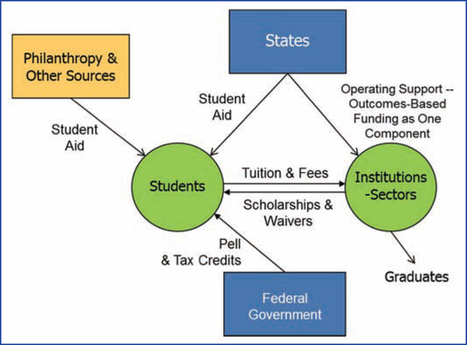"Certainly there are limitations to the model described, some of which I have identified and others which I'm sure readers will point out. It is currently being modified to eliminate some of its shortcomings.
But as flawed as it may be, it serves to point out several key points. First, different approaches to attaining goals have different cost consequences.
Second, in almost all scenarios, resources required by community colleges outstrip those that will be required by four-year institutions. This is a direct contradiction to priorities typically assigned in the appropriation process. Institutional costs can be reduced under an assumption of marginal costs being less than average costs, but this doesn't change the need to assign priority to funding for those institutions that will have to do the heavy lifting if attainment goals are to be met.
Third, the largest component of costs in both scenarios is student financial aid. The real-world examples reinforce the point made earlier in this paper that concentrated attention to the design of financial-aid programs is perhaps the key element in the development of cost-effective means of reaching aggressive attainment goals.
Finally, it drives home the point that reaching such goals will take substantial additional resources. Ways can be found to mitigate these costs, but success will be impossible without additional state investments."
Via Society for College and University Planning (SCUP)



 Your new post is loading...
Your new post is loading...









"Dennis Jones, [a frequent SCUP presenter,] is president of NCHEMS, a nonprofit research-and-development center founded to improve strategic decision making in institutions and agencies of higher education. Jones is widely recognized for his work in such areas as developing public agendas to guide higher-education policymaking; financing, budgeting, and resource allocation; linking higher education with states' workforce and economic-development needs; and developing information to inform policymaking.